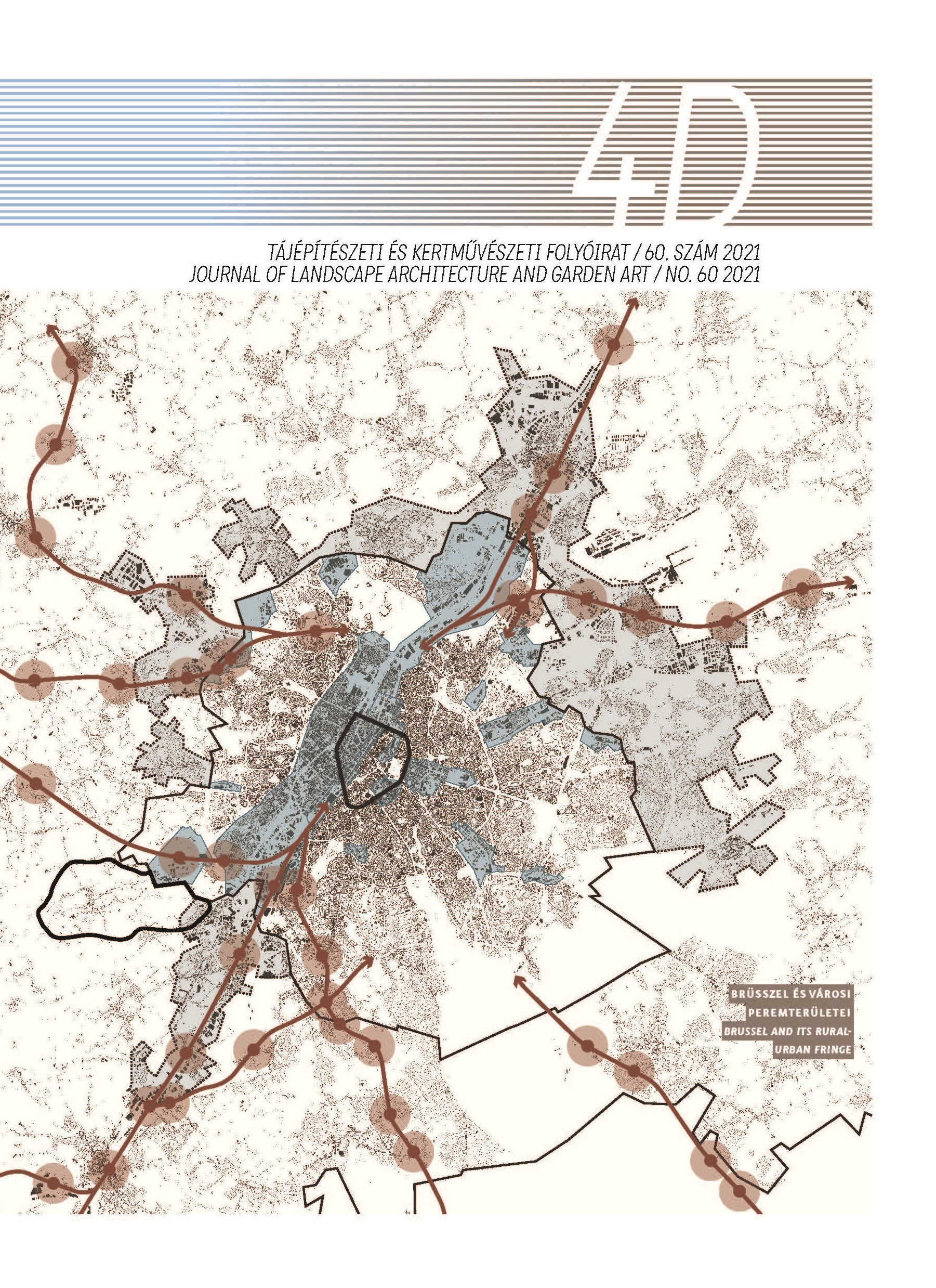Landscape concept of Pál Teleki and its renaissancein the 21th century
DOI:
https://doi.org/10.36249/60.4Keywords:
Teleki Pál, landscape definition, landscape character, landscape geography, landscape architecture, Council of Europe, Landscape ConventionAbstract
Pál Teleki, a great Hungarian thinker and geo-politician, died 80 years ago. In the heart of his philosophy stood the landscape. He conceived landscape as a human environment, an organic life unit created by man-nature interaction. This view was the foundation of his economic and political geography between the two World Wars. Teleki recognised the unique character of the landscapes formed by people living in them and considered this individuality as a resource. He declared already in 1917: "the basic task of the geography crystallises around the special character of the landscape." During the second half of the 20th century, though, this complex approach wasn't accepted, either in politics or in science. Geography was split into physical and social geography, and landscape studies were subordinated in many countries to physical geography. Areas delineated by administrative, political boundaries – municipalities, counties, regions – became the reference units of the research that took human activities into account. Nature, economy and society were the objects of different studies. The claim for a reunification emerged in the 1960ies by professor Mihály Mőcsényi, the founder of the Hungarian landscape architecture school. He recognised that the environmental problem's cause is the separation of nature and society, urban and rural, and the solution could be their integration within the landscape. Furthermore, in Great Britain, the significance of landscape character in heritage protection and rural development was discovered in the 1980ies. The evolving landscape ateliers served as conceptual background for the European Landscape Convention that opened the floor for an integrative landscape approach and the landscape character concept. Consequently, the renaissance of Teleki's landscape concept started to emerge both in science and planning.
References
Ablonczy B. (2005): Teleki Pál. Osiris: Budapest.
Antrop, M. – Van Eetvelde, V. (2019): Landscape Perspectives. The Holistic Nature of Landscape. Springer Netherlands.
Bardóczy S. – Gerzánics A. – M Szilágyi K. szerk. (2021):MM_C Mőcsényi Mihály, egy polihisztor tájépítész. Tanulmányok és esszék Mőcsényi Mihály életéről. Terc Kft.: Budapest.
Berleant, A. (1997): Living in the landscape: Toward an Aesthetic of Environment, University Press of Kansas: Lawrence.
Countryside Agency (1999): Countryside Character: The character of England's natural and man-made landscape. Volume 1-8. Countryside Commission: Cheltenham.
Csemez A. (1996): Tájtervezés-Tájrendezés. Mezőgazda Kiadó: Budapest.
Csemez A. (2001): A tájképi potenciál és a tájjelleg meghatározása. (Identification the visual potencial and the character of the landscape) MTA Doktori értekezés (DSC Thesis)
Scottish Natural Heritage (2002): Landscape Character Assessment. Guidance for England and Scotland. Topic Paper 5: Understanding Historic Landscape Character. Scottish Natural Heritage, The Countryside Agency: Cheltenham.
ET/COE (2000): Az Európa Táj Egyezménye. Európai Unió: Firenze. URL: https://rm.coe.int/09000016802f3faf [2020.11.30.]
Fairclough, G. J.– Sarlöv Herlin, I.– Swanwick, C. (2018): Routledge Handbook of Landscape Character Assessment. Current Approaches to Characterisation and Assessment. Routeledge: Abingdon, Oxon.
Fodor F. (2001): TELEKI PÁL. „Egy bújdosó könyv”. Mike ésTársa Antikvárium: Budapest.
Hézser A. (1922): A földrajzi tájleírás. Földrajzi Közlemények, 50(1) 21-27.
Hajdú Z. (1991): Teleki Pál, a földrajztudós. Magyar Tudomány, 12, 1503–1509.
Jeney L. (szerk) (2016): Teleki Pál, a geográfus. Teleki Pál halálának 75. évfordulója alkalmából. (Pál Teleki the geographer. At the 75th anniversairy of his death) BCE Gazdaságföldrajz és Jövőkutatás Központ, Teleki Pál Egyesület: Budapest–Gödöllő.
Konkoly-Gyuró É. – Tirászi Á. – Wrbka T. et al. (2010): Határon átívelő tájak karaktere. A Fertő-Hanság medence és Sopron térsége. Nyugat-Magyarországi Egyetem Kiadó: Sopron.
Konkoly-Gyuró, É. (2019): A tájszemlélet sokszínűsége és a tájfogalom alakulása Európában. 4D, (53) 34-37.
Konkoly-Gyuró, É. (2021): A fogalomalkotó és a diszciplinateremtő. In Bardóczy S. – Gerzánics A. – M Szilágyi K. (szerk): MM_C Mőcsényi Mihály, egy polihisztor tájépítész. Tanulmányok és esszék Mőcsényi Mihály életéről. Terc Kft.: Budapest.
Konkoly-Gyuró É. – Vaszócsik V.–Sain M. et al. (2011): Tájkarakter-elemzés Magyarországon. Szakmai összefoglaló és módszertani útmutató. Agrárminisztérium: Budapest
Lambrick, G. – Hind, J. – Wain, I. (2013): Historic Landscape Characterisation in Ireland: Best Practice Guidance. The Heritage Council: Kilkenny.
Raymond, R. –Luginbühl, Y.–Seguin, J.-F. et al. (2015): Landscape Atlases. Landscape identification, characterisation and assessment method.
Swanwick, C (2002): Landscape Character Assessment. Guidance for England and Scotland. Scottish Natural Heritage, The Countryside Agency: Cheltenham.
Simensen T. – Halvorsen R. – Erikstad L. (2018): Methods for landscape characterisation and mapping: A systematic review. Land Use Policy, 75. 557-569. DOI: https://doi.org/10.1016/j.landusepol.2018.04.022.
Teleki P. (1917) [1996]: A földrajzi gondolat története. [reprint] Kossuth: Budapest.
Teleki P. (1918): A Magyar Földrajzi Társaság szózata a világ Földrajzi Társaságaihoz. Földrajzi Közlemények, 46(7), 289-320.
Koch Ferenc – Kádár László – Teleki P. (szerk.) (1936): A gazdasági élet földrajzi alapjai. Centrum Kiadóvállalat Rt: Budapest.
Teleki P. (1937): A tájfogalom jelentőségéről. Budapesti Szemle, 247(719-721), 129–141.
TÓTH A. (2003): A tájfogalom jelentőségéről. Tájökológiai Lapok,1(2), 125-134.
Wascher D. M. (ed) (2005): European Landscape Character Areas - Typologies. Cartography and indicators for the Assessment of the sustainable landscapes. Landscape Europe in collaboration with ELCAI project partners: Alterra, The Netherlands. URL: https://edepot.wur.nl/1778
Downloads
Published
Issue
Section
License
Copyright (c) 2021 Konkoly-Gyuró Éva

This work is licensed under a Creative Commons Attribution-NonCommercial-NoDerivatives 4.0 International License.
A folyóirat Open Access (Gold). Cikkeire a Creative Commons 4.0 standard licenc alábbi típusa vonatkozik: CC-BY-NC-ND-4.0. Ennek értelmében a mű szabadon másolható, terjeszthető, bemutatható és előadható, azonban nem használható fel kereskedelmi célokra (NC), továbbá nem módosítható és nem készíthető belőle átdolgozás, származékos mű (ND). A licenc alapján a szerző vagy a jogosult által meghatározott módon fel kell tüntetni a szerző nevét és a szerzői mű címét (BY).



